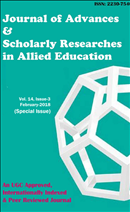A Study on Dual Fuel Engine Combustion and Emissions
Optimizing combustion efficiency in dual-fuel engines
Keywords:
dual-fuel engine, combustion, emissions, compression ignition, exhaust emission, gas oils, combustion methods, spark-ignited engines, timing, engine load limitsAbstract
Latest research has been carried out into the introduction of a dual-combustion approach to increase the heat efficiency of internal combustion engines while reducing their emissions at the same time. Compression ignition (CI) motors use double-fuel combustion to facilitate the use of more easily accessible gas oils or modern combustion methods. In this study we have studied about the dual-fuel compression-ignition engines, effects of exhaust emission, conventional dual-fuel compression-ignition engines, advanced dual-fuel compression-ignition engines, dual-fuel spark-ignited engines which is concluded that in compression ignition (CI) engines, Dual-fuel combustion provides an efficient solution for timing and extending engine load limits to regulate combustion. To this end, both a high and low-reactivity fuel is inducted, the concentration is adjusted to one another and hence the reactivity of the fuel mixture is optimized under various operating conditions (on a cycle-by-cycle basis).Published
2018-02-04
How to Cite
[1]
“A Study on Dual Fuel Engine Combustion and Emissions: Optimizing combustion efficiency in dual-fuel engines”, JASRAE, vol. 14, no. 3, pp. 551–560, Feb. 2018, Accessed: Nov. 29, 2025. [Online]. Available: https://ignited.in/index.php/jasrae/article/view/7538
Issue
Section
Articles
How to Cite
[1]
“A Study on Dual Fuel Engine Combustion and Emissions: Optimizing combustion efficiency in dual-fuel engines”, JASRAE, vol. 14, no. 3, pp. 551–560, Feb. 2018, Accessed: Nov. 29, 2025. [Online]. Available: https://ignited.in/index.php/jasrae/article/view/7538











